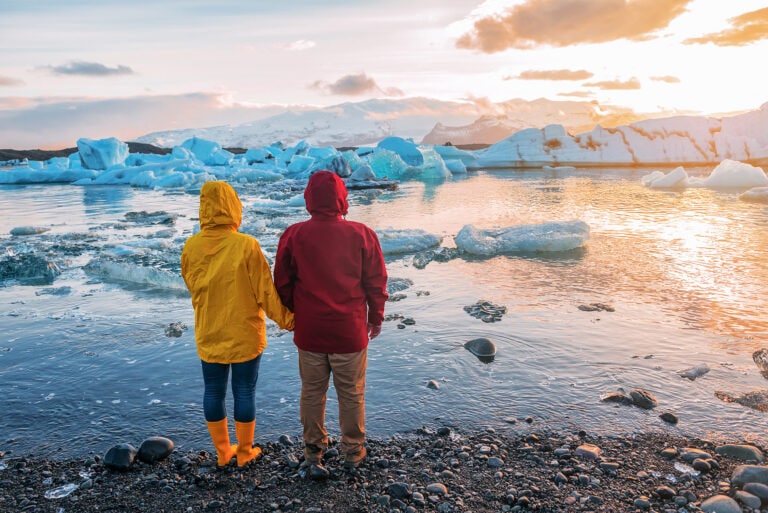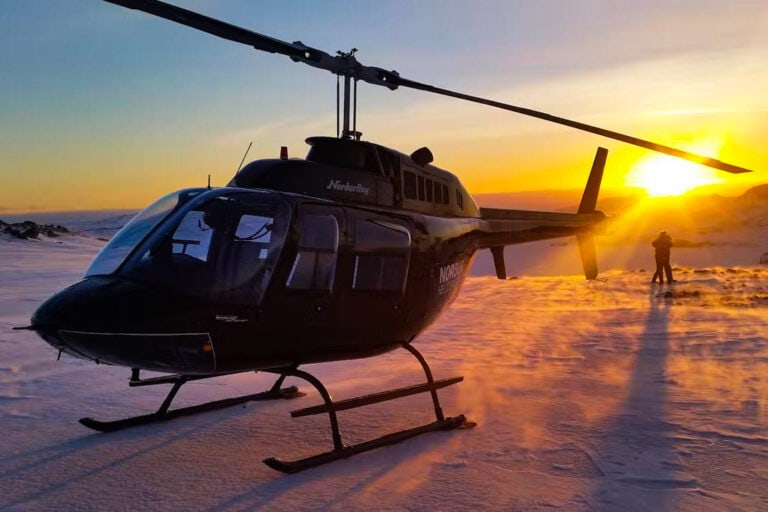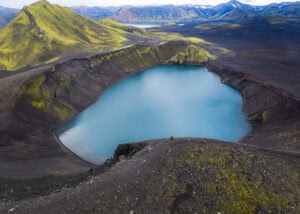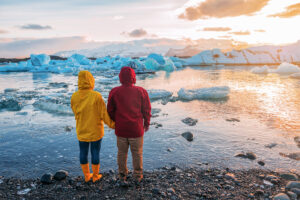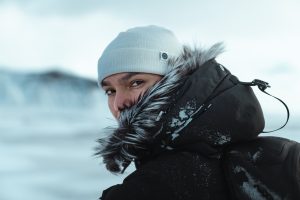As you travel from the international airport to the capital Reykjavík, you will surely notice the moonlike landscape and rugged lava fields along the way. This is the Reykjanyes-peninsula, one of Iceland’s most active volcanic regions and a UNESCO Global Geopark.
Reykjanes is home to Iceland’s main airport, Keflavík, and one of the country’s top attractions, the Blue Lagoon. Beyond these two stops, the peninsula has much to offer. Stunning coastlines, dramatic sea cliffs, lighthouses, dormant and active volcanoes, steaming geothermal fields, moss-covered lava fields, and tiny fishing villages are among the many memorable sights you can witness in this sparsely populated region.
Here are some of the most significant attractions of Reykjanes peninsula:

- Fagradalsfjall / Meredalir / Reykjanes volcano
- The Blue Lagoon
- Gunnuhver Geothermal Area
- Reykjanestá / Valahnúkamöl Cliffs
- Reykjanesvíti Lighthouse
- The Bridge Between the Continents
- Krýsuvík / Seltún Geothermal area
- Kleifarvatn Lake
- Mount Keilir
- Brímketill
- The Lighthouses in Garður
- Krísuvíkurberg cliffs
- The Viking World
Fagradalsfjall / Meredalir / Reykjanes volcano
Iceland’s most recent volcanic eruptions occurred here in 2021 and 2022. In March 2021, Reykjanes experienced its first volcano eruption in 800-900 years. On this occasion, the eruption lasted for around six months, and lava flowed from the Fagradalsfjall volcano into Geldingadalur valley.
Then in August 2022, the volcano became active once more. This time, the molten lava erupted from the volcano and poured into Meradalir valley.

If you’re up for it and the weather allows, you can even hike along marked paths to see the eruption site for yourself. Please note that the terrain is rough, and the weather can be unpredictable. In summertime and good weather, the hike can take around 4–5 hours round trip. We only recommend it to those in good physical condition and with some hiking experience; otherwise, contact us for private guidance.
Find out more on our Iceland volcano eruption page and visit Iceland’s Safe Travel website for essential updates on accessing the eruption site safely.



The Blue Lagoon
One of Iceland’s most famous attractions, The Blue Lagoon, is a major gem of Reykjanes. It is indeed a beautiful sight even if you don’t take a bath here; we recommend you walk around the lagoon from the outside. There, the water isn’t warm, but it is just as beautiful as the thermal part of the lagoon. Surrounded by rugged, mossy lava, it is a picturesque site
Read more about the Blue Lagoon and its unique geology here. Read about Iceland’s best geothermal spas in this article




Gunnuhver Geothermal Area
The thick steam of Gunnuhver is visible from a far distance. It is one of Iceland’s most impressive geothermal areas, producing the largest steam clouds. The area features smoking grounds, bubbling mud pools, and wildly boiling waters in the hot springs. The site is named after a ghost, Gunna, who caused quite a stir in the area over 400 years ago. The local priest finally manages to set a trap, and she falls into the hot spring.



Reykjanestá / Valahnúkamöl Cliffs
The southwesternmost tip of the Reykjanes peninsula is called Reykjanestá or Valahnúkamöl. This is a sight of extraordinary beauty: a group of sea stacks rising into the sky just off the coast, by the cliffs constantly battered by the sea. Plenty of bird species nest on these cliffs in the summertime.
By the cliffs, there is a picturesque hill called Valahnjúkur. Although it looks very inviting for a walk, the path leading to the tip of the hill is closed as there is a large crack in the hill, and it is expected to break down eventually and fall into the sea. Since earthquakes are plentiful in this area, we recommend respecting the closure.
You can also try to find a sculpture, “the Last Great Auk” on this cliff. It stands there in memory of the last breeding pair of the great auk (a penguin-like species) that were killed on Eldey island in 1844. The island is visible in the distance.


Reykjanesvíti Lighthouse
The next attraction is Reykjanesviti Lighthouse, visible from Reykjanestá beach. The lighthouse was first built in 1878 but was damaged by numerous earthquakes, so much so that there was the risk of the lighthouse falling into the sea. A new building was raised in 1908 and has remained the same since.
Reykjanesviti is Iceland’s oldest lighthouse, and it’s a great place to walk up and have a picnic on a nice summer day.

The Bridge Between the Continents
Iceland sits on the top of the tectonic boundaries between the Eurasian and North American tectonic plates. As the plates spread, new fissures open in the ground every now and then. One of these fissures is located in the Thingvellir National Park on the Golden Circle.
Another fissure you can visit is the result of the same forces, located on the west end of the Reykjanes peninsula. There is a small footbridge over the crack, so you can either stand up on it or go down into the fissure and stand on the borders of the two tectonic plates.

Krýsuvík / Seltún Geothermal area
Seltún is a dramatic geothermal field within the Krýsuvík volcanic system on Reykjanes. It features bubbling hot springs, mud pots, and a martian landscape painted with bright yellows, reds, and cyan greens. These captivating colors result from sulfur interacting with the other minerals in the soil.
The site has wooden paths and two viewing platforms from which you can look at the multi-colored geothermal area. It’s crucial to stay on the path as the whole area is highly active, and everything here constantly changes.



Kleifarvatn Lake
Kleifarvatn is the largest lake in Reykjanes. The road leads by the lake on a long stretch and offers breathtaking views along the way, with towering mountains on one side and the lake on the other. Be amazed by the alien landscape. On sunny days, red and brown colors contrast with the aquamarine blue of the lake.
Kleifarvatn was once much bigger, but it lost 20% of its volume in 2000 when an earthquake broke open a fissure under the lake. This caused the lake to drain into the nearby ocean through a subterranean channel. It, however, recovered its volume almost entirely.
There are several viewpoints and places to stop, and walking down the sandy beach is possible. Locals often come here to fish or picnic with friends and family on sunny summer days.

Mount Keilir
Keilir is a distinct, cone-shaped mountain visible from Reykjavík on clear days. It’s only 380 m / 1246 ft tall, and locals like to hike to its top. The hike itself isn’t very difficult for someone in good strength, and the view on a good day makes an effort worth it. Getting to Keilir, however, requires a 4WD car as the road leading there is quite bumpy.

Brímketill
Brímketill is a distinctive pool in the rock by the sea coast. Aside from looking like a man-made structure or a hot spring, it is famous for having an interesting history.
Its old name was Oddný’s Pool, Oddnýjarlaug, named after a female giantess or troll. It is believed that Oddný used this natural pool to wash her clothes and bathe during the night. According to local folklore, trolls petrify turn into stone if the sun catches them during the daytime.
Another exciting feature of the site is the giant waves regularly battle the coastal rocks. Standing on the platform, there’s a chance you’ll get wet, as waves can sometimes reach the parking lot!


The Lighthouses in Garður
At the tip of the peninsula is a small village called Garður. It has two lighthouses standing side by side, one tall and one short. The shorter one was one of the oldest lighthouses in Iceland, built first in 1897 and guided the fishing vessels of Reykjavik for many decades.
However, the forces of the sea corroded the cliff serving as its base, and it became unsafe. It is expected that, eventually, the sea will claim the building. Therefore, a larger lighthouse was built further on the dry land in 1944.
Today, the little old lighthouse has become a romantic attraction for visitors and a perfect photo location. It even serves as a wedding location for adventurous couples.

Krísuvíkurberg cliffs
Krísuvíkurberg is a 15-kilometer / 9.3 miles-wide and 40 to 70 meters (130-230 Ft) tall cliff wall on the southern coastline of Reykjanes Peninsula. The wall is especially picturesque as it exposes colorful layers of lava rocks accumulated on top of each other over thousands of years in many eruptions. Each layer has a unique color and represents different times and kinds of lava. There are up to ten layers on the east part of Krísuvíkurbjarg and around five on the west side. The layers are visible on the wall with different
The cliff is home to over 57 thousand seabird couples in the summertime who return yearly to breed. The site isn’t accessible in winter; it is a unique summer attraction.

The Viking World
Viking World is a small but attractive museum outside of Reykjanesbær town. It features a great Viking ship, built in 1996 as a replica of a 9th-century Viking ship. This very ship was sailed to New York in 2000 as a part of the millennial celebration of Leifur Eiríksson’s journey to the New World, and the sailor was its builder, Gunnar Marel Eggertsson. There are five small exhibitions in the museum, and there is also a playground and a settlement zoo.

The wonderfully varied landscape of West Iceland offers visitors countless attractions to explore. Read our articles on West Iceland and other regions: The Snaefellsnes peninsula, Silver Circle, and The Golden Circle,
